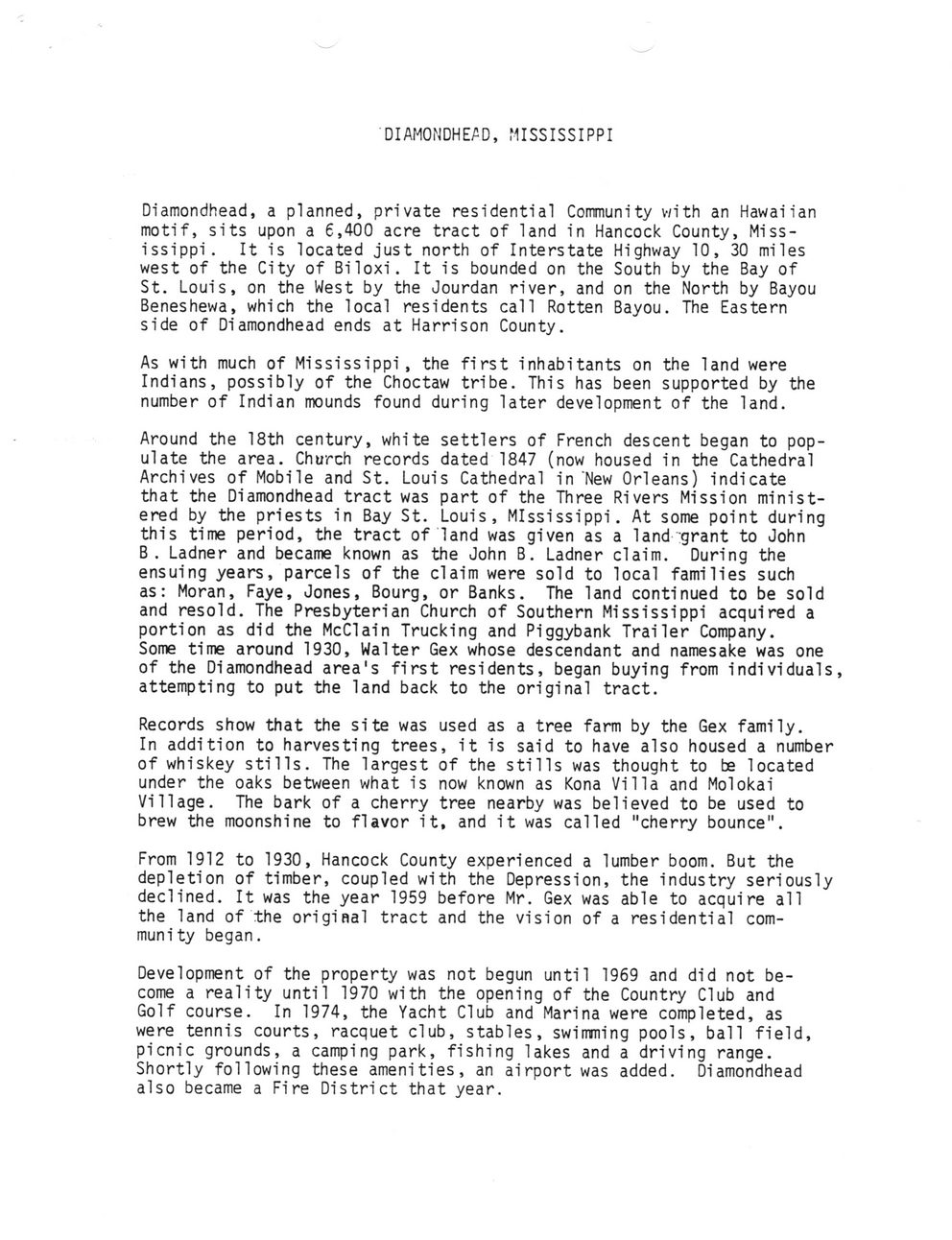This text was obtained via automated optical character recognition.
It has not been edited and may therefore contain several errors.
DIAMONDHEAD, MISSISSIPPI Diamondhead, a planned, private residential Community v/ith an Hawaiian motif, sits upon a 6,400 acre tract of land in Hancock County, Mississippi. It is located just north of Interstate Highway 10, 30 miles west of the City of Biloxi. It is bounded on the South by the Bay of St. Louis, on the West by the Jourdan river, and on the North by Bayou Beneshewa, which the local residents call Rotten Bayou. The Eastern side of Diamondhead ends at Harrison County. As with much of Mississippi, the first inhabitants on the land were Indians, possibly of the Choctaw tribe. This has been supported by the number of Indian mounds found during later development of the land. Around the 18th century, white settlers of French descent began to populate the area. Church records dated 1847 (now housed in the Cathedral Archives of Mobile and St. Louis Cathedral in New Orleans) indicate that the Diamondhead tract was part of the Three Rivers Mission ministered by the priests in Bay St. Louis, Mississippi. At some point during this time period, the tract of land was given as a land grant to John B. Ladner and became known as the John B. Ladner claim. During the ensuing years, parcels of the claim were sold to local families such as: Moran, Faye, Jones, Bourg, or Banks. The land continued to be sold and resold. The Presbyterian Church of Southern Mississippi acquired a portion as did the McClain Trucking and Piggybank Trailer Company. Some time around 1930, Walter Gex whose descendant and namesake was one of the Diamondhead area's first residents, began buying from individuals, attempting to put the land back to the original tract. Records show that the site was used as a tree farm by the Gex family. In addition to harvesting trees, it is said to have also housed a number of whiskey stills. The largest of the stills was thought to be located under the oaks between what is now known as Kona Villa and Molokai Village. The bark of a cherry tree nearby was believed to be used to brew the moonshine to flavor it, and it was called "cherry bounce". From 1912 to 1930, Hancock County experienced a lumber boom. But the depletion of timber, coupled with the Depression, the industry seriously declined. It was the year 1959 before Mr. Gex was able to acquire all the land of the original tract and the vision of a residential community began. Development of the property was not begun until 1969 and did not become a reality until 1970 with the opening of the Country Club and Golf course. In 1974, the Yacht Club and Marina were completed, as were tennis courts, racquet club, stables, swimming pools, ball field, picnic grounds, a camping park, fishing lakes and a driving range. Shortly following these amenities, an airport was added. Diamondhead also became a Fire District that year.

Hancock County ABC Program Diamondhead-(1)